SUMMARY
This is AI generated summarization, which may have errors. For context, always refer to the full article.
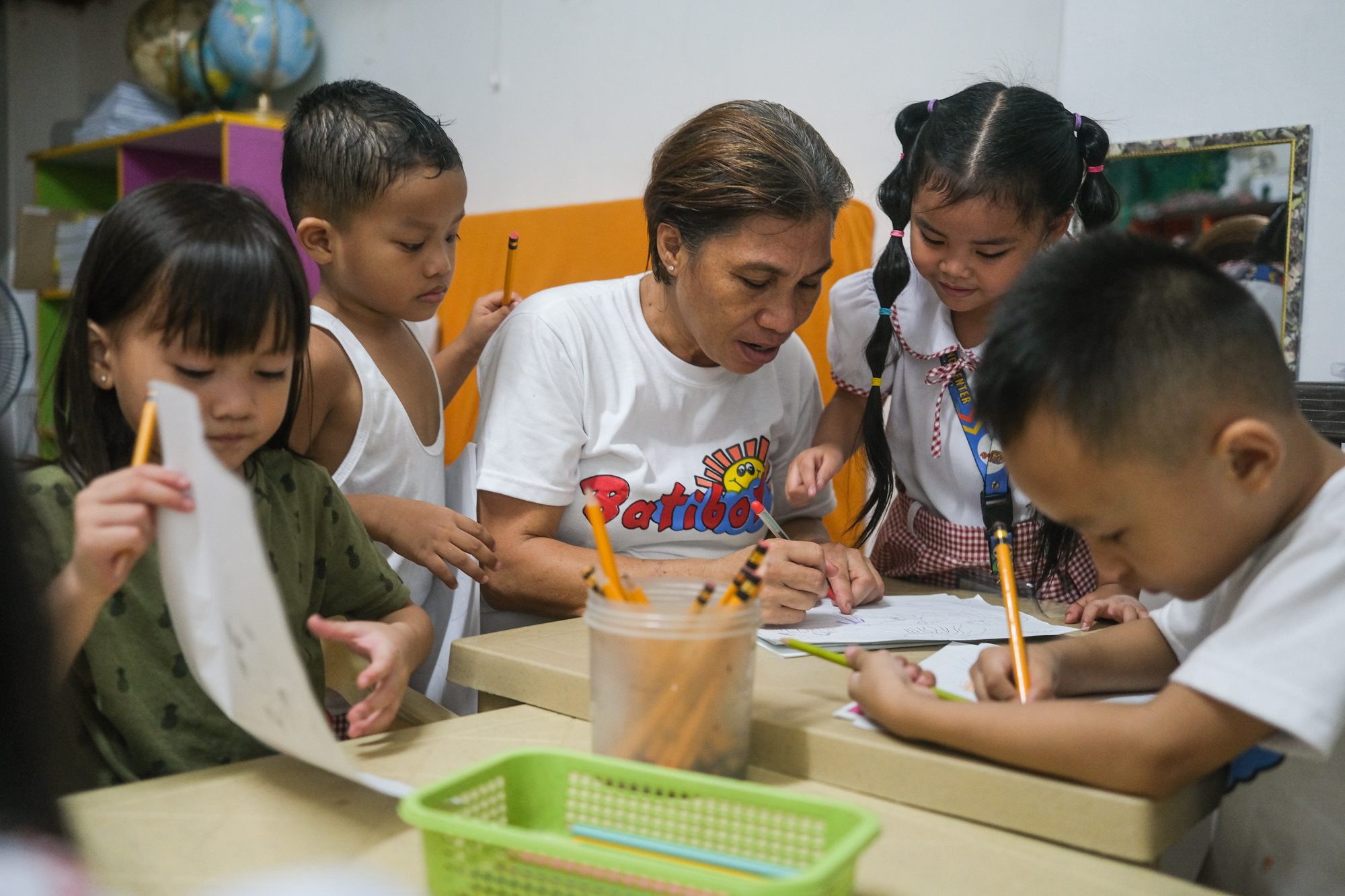
MANILA, Philippines – “Karpintero, doktor, minero, nars (carpenter, doctor, miner, nurse).” Around 10 kids inside an unassuming 25-square-meter, three-story apartment building, in Industrial Valley, Marikina City are singing enthusiastically, practicing their moving-up ceremony.
The 4-to-6-year-olds are enrolled in Batibot, a community-run early-learning center in a quiet residential neighborhood beside the Marikina River.
Aya Santos, a mom who lives in Novaliches, Quezon City, sends her five-year-old son to the school despite the distance, as it is one of the few, if not the only, progressive early learning center within Metro Manila.
“I wanted a progressive early learning center because I want a school that values playful learning, rather than one that forces children to learn how to read or to write at a certain age, especially since my child will be studying for a long time,” said Santos.
A presidential decree in the Philippines requires each barangay or village to have at least one childcare center. However, according to a country brief of the non-profit, Early Childhood Workforce Initiative, in 2011, 34 years after the decree was passed, 4,570 of 42,026 barangays still did not have their own and the reach of established ones serviced only 20% of the entire population.
The latest State-of-the-Art-Review (SOTAR) of Day Care Services, published in 2010, said there is a need for more than one childcare center per village to guarantee widespread access to services for all children.
State of ECCD in the Philippines

In the Philippines, Early Childhood Care and Development (ECCD) policies are led by three national government agencies. The Department of Health oversees family health and nutrition programs, the Department of Social Welfare and Development (DSWD) implements the 4Ps or Pantawid Pamilya Pilipino Program and supplementary feeding program, and the Department of Education (DepEd) prepares the curriculum.
The implementation of these programs depends on each local government unit (LGU), and the scale depends on the LGU’s budget allocation and priority for early childhood care.
Dr. Excelsa Tongson, associate professor of the Department of Family Life and Child Development of the University of the Philippines Diliman, said that there are differences in priorities by LGUs and there are several sources of funds to implement the program as specified in the law. However, due to the lack of data on these programs, it is difficult to conclude the current state of early childhood care and development programs in the Philippines.
“We need to have another SOTAR because there is a disconnect and discordance in implementation. The ECCD council is a national government agency that has this mandate, but the Department of the Interior and Local Government (DILG) is not part of its governing board when the full implementation of the ECCD program and services rests on the hands of the local chief executive,” explained Tongson.
Additionally, the 2010 SOTAR didn’t include data on privately-run centers like Batibot. In 2020, during the pandemic, several daycare centers went out of business, according to Libertad Dipon, executive director of Batibot. There are nine public and private centers in Industrial Valley, two private and one public center closed down. Batibot is one of the few that have survived.
‘A school maintained through community’
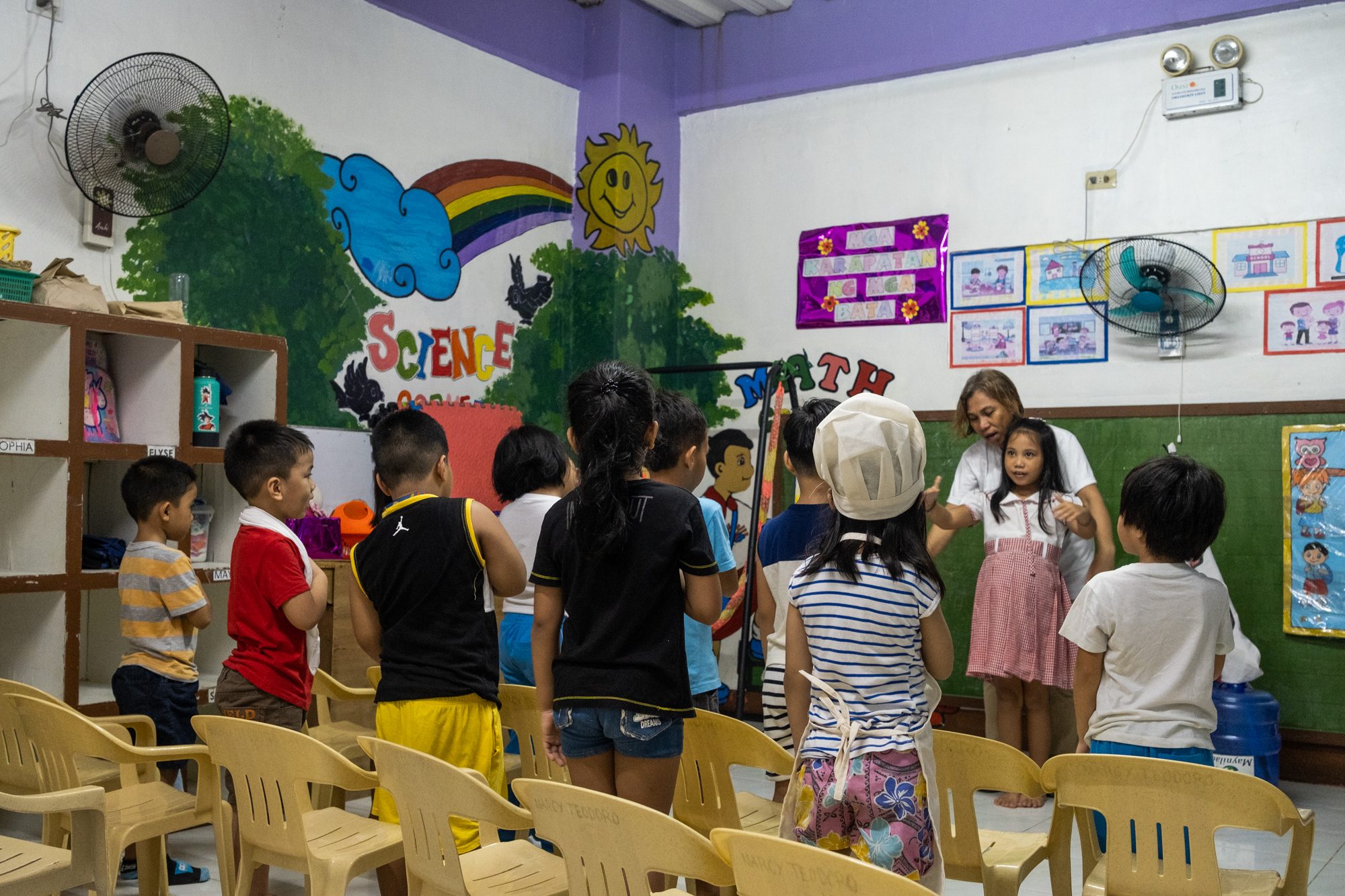
Batibot, a public-private child care center, was named after a children’s show in the 1980s that was shot in the town. The almost four-decade-old school started as a single-floor facility for children of tobacco factory workers and vendors living in Marikina in 1985 and was the first daycare center in the barangay.
Dipon, also known as “Teacher Libby,” said that the school was able to survive decades of challenges, from several typhoons to the pandemic, through the collective contributions of the community.
In 2009, when Typhoon Ondoy inundated Marikina, Batibot had to close down for two months. The whole first floor was submerged in mud, the school materials which mostly came from donations had been washed out, and members of the community cried over the damage done to the school.
“Mothers offered to wipe off the mud, while workers donated hollow blocks and their time to help rebuild the school. A parent who’s an architect offered to redesign the school, designing it to reach up to three floors since the school is located in a flood-prone area. It took years to slowly rebuild the building, and it was only until 2021 that the third floor was officially finished,” narrated Dipon.
“This school is built and maintained by the community. There was even a time when parents staged a play and used the donations to support the school. Everyone helped in the best way that they can because the community realized how valuable having a child care center is,” she added.

LGU-run child development centers in the country are required to use a Learning Resource Package from DepEd. Since Batibot is privately-run, it has more freedom to design its curriculum catering to the needs of its enrollees and families. The school has a learning registered number (LRN) provided by the DepEd, allowing toddlers who moved up to enroll in preschool or Grade 1 in public or private schools.
Lita Malundras, also known as Teacher Lita, said that their curriculum changes every school year. For 2023, the school decided to focus on workers because most of the children enrolled in the school had parents who worked in factories, were OFWs or professionals.
“Most of them were laid off from work due to the pandemic, so we focused the curriculum on the needs of their parents and to teach kids that issues in society affect families,” Malundras said.
Before every school year begins, the school assesses all the enrollees’ capacities and designs a curriculum based on the skills of currently-enrolled kids. The lessons begin with the kids getting to know themselves through their bodies, understanding their role in the family, and then their responsibility in the community and society.
“There are ways to tackle big societal roles and problems with children at an early age. It’s little things, like making them understand how their mother carried them for nine months, and how difficult bearing a child could be, but in children’s terms,” explained Malundras.
Extended homes, communities
While children are enrolled, parents are also invited to parent seminars to teach them progressive discipline, some are also taught alternative livelihood workshops. But beyond the curriculum, the school becomes an extension of home and community for several parents.
Santos is an NGO worker who often travels for work, she leaves her son, Kion, in Batibot for a week. Renalyn Cabututan, another parent who lives a few blocks away, sometimes takes Kion in for several nights at her home. For Cabututan, there is no problem in taking care of Kion because it also gives Zion, her son, company.
“What I like about the school the most is it’s a community school, and my co-parents know that it takes a village to raise a child. People are willing to take care of each others’ kids, and the kids can socialize more and forge bonds with their classmates,” said Santos.
Core values of simplicity are also taught to the children and parents in the form of meals. Parents are on a rotation on school days and are given a budget to grocery and cook meals for the students during meal time, while some are tasked to wash the dishes.
“We do this so that kids can avoid comparing each other’s meals, as well as to ensure that their meals are healthy,” explained Malundras.
While the community-run facility stands out for its curriculum and environment, its teachers, however, are not separate from the plight of ECCD workers in the Philippines.
In Batibot, workers’ salaries – referred to as allowances – range from P7,000-9,000 monthly and come from the small tuition paid by parents.
“I also work in the barangay for extra income. For other teachers, the income is deficit, but we survive because we are single and live a simple life in Batibot,” said Dipon.
The average salary of childcare workers, regardless of whether state- or privately-owned, ranges from P13,000-P18,000 per month. Tongson said that a P18,000 salary is already considered high for childcare workers. Most of these workers also don’t enjoy the same benefits as regular workers. Teacher aides, or volunteer teachers who assist in state-run centers, are even paid as low as P500 per month.
Magna Carta for child care workers
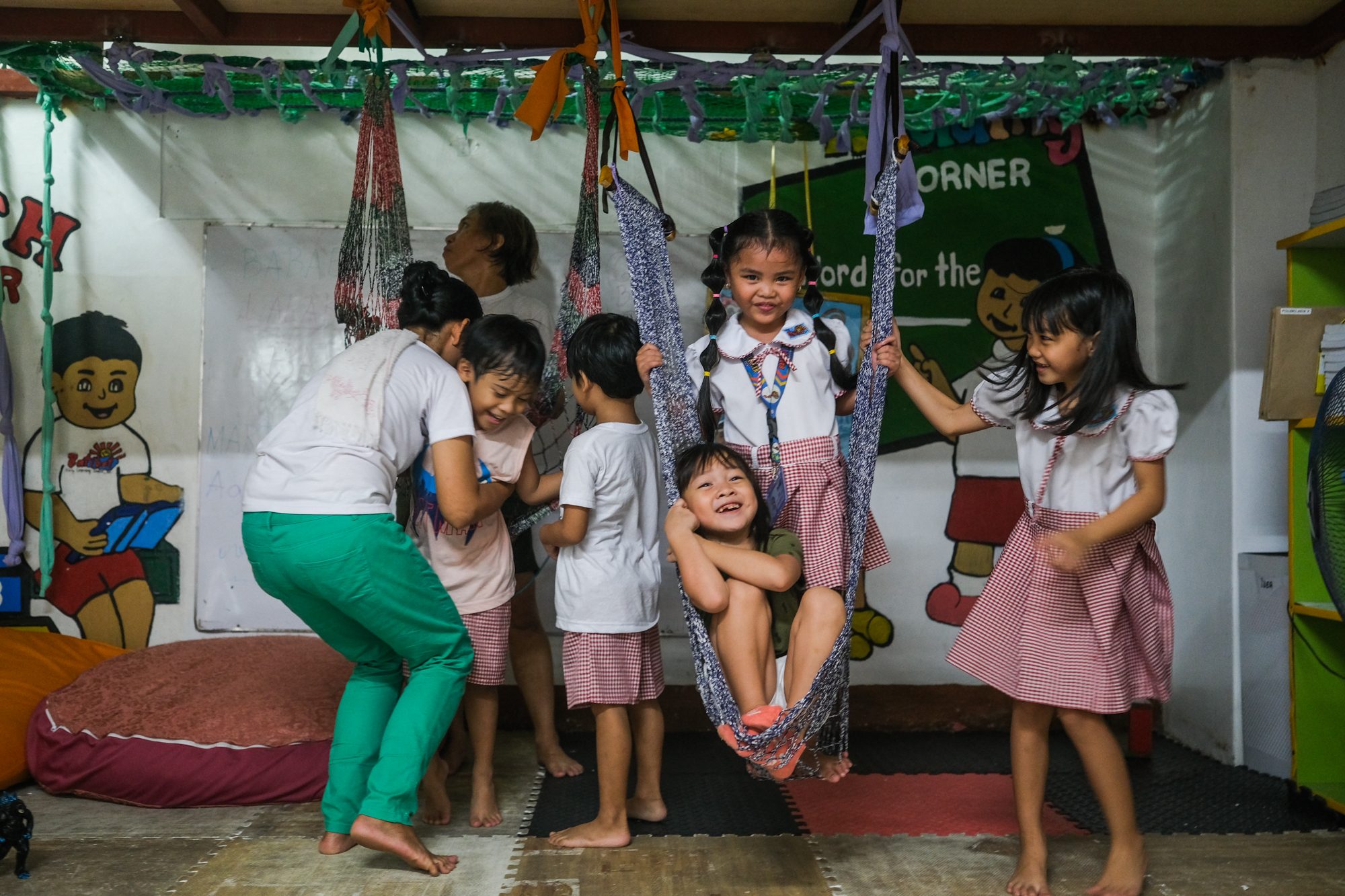
This is why for Gabriela Women’s Partylist Representative Arlene Brosas, Batibot itself mirrors the state’s lack of priority given to ECCD.
“Batibot helps the small community of Industrial Valley and it continues to exist because of the parents’ goodness of the heart to support these services. However, this also shows that the private sector is [filling in] the gaps of the state, because this means that the current daycare centers that we have can’t fulfill the needs of all families,” said Brosas.
For Gabriela, the state can express support for ECCD programs by passing the bill for the Magna Carta for Child Care Workers (House Bill 3266), which seeks to provide security of tenure for daycare workers or child development workers. This is also to standardize salary for over 67,000 childcare development workers, both tenured and non-tenured.
Unfortunately, there have been no developments in the passing of House Bill 3266 as it has remained at the committee on welfare of children. The partylist has submitted amendments to include both financing for workers under the DSWD budget, and the right of daycare workers to self-organization.
“Childcare workers have a very big role in our society, which is why it is necessary to fight for their rights. A child’s brain is formed until 9 years old, and we need to give these carers what they need so that they can also be in a comprehensive capacity to take care of the next generation,” said Brosas.
Meanwhile, in Batibot, as it starts to drizzle in the daylight, the kids utter the last lines of a poem: “Salamat sa sakripisyo, mga manggagawang Pilipino,” (Thank you for the sacrifices, Filipino workers). The day feels quiet and slow as teachers and guardians – some of them parents just gotten out of work – continue to hope for better working conditions. – Rappler.com
This story is supported by the Dart Center. Garcia is a 2023 Early Childhood Reporting Fellow of the Dart Center.
Add a comment
How does this make you feel?
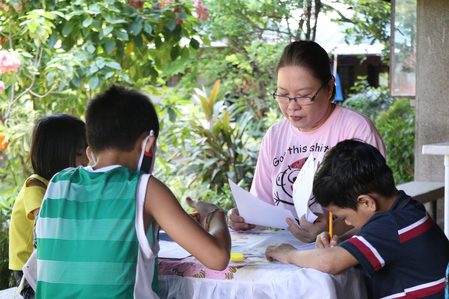

![[OPINYON] Diborsiyo sa mata ng isang anak](https://www.rappler.com/tachyon/2024/06/new-school-divorce-children-june-13-2024.jpg?resize=257%2C257&crop=294px%2C0px%2C720px%2C720px)


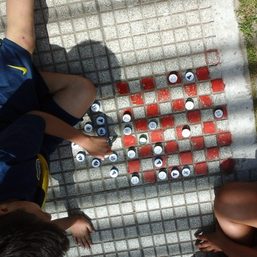










There are no comments yet. Add your comment to start the conversation.